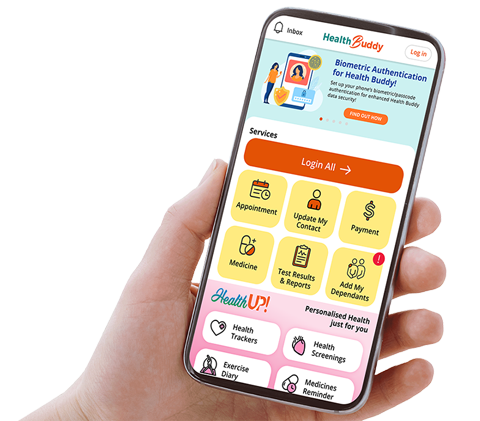KK Women's and Children's Hospital will NEVER ask you to transfer money over a call. If in doubt, call the 24/7 ScamShield helpline at 1799, or visit the ScamShield website at www.scamshield.gov.sg.
Orthopaedic Surgery/Spine surgery - Scoliosis Neurological Deficit and Death Rates
The department of Orthopaedic Surgery at KKH treats a wide range of musculoskeletal pathologies in children and adolescents. These include fractures, congenital conditions, paediatric tumours and sporting injuries. One of the most common conditions treated is scoliosis, of which adolescent idiopathic scoliosis is the most common. Surgery is indicated in severe cases to correct and prevent progression of the scoliotic curves.
Amongst the known complications associated with surgery for severe scoliosis, neurological complications and death remained the most serious and feared. Fortunately, these complications are relatively uncommon.
Neurological complications during and following scoliosis surgery range from mild transient neuropraxias to complete cord injuries with paralysis. The reported rate of neurologic deficits following scoliosis surgery has been reported to be 0.73%1 overall, and 0.26-1.75%2 specifically in AIS cases. All scoliosis surgeries are performed under intraoperative neuromonitoring, which remains the standard of care worldwide.
The incidence of death during or following scoliosis surgery in an otherwise healthy patient is less than 1%3. Reported causes of death in this patient group include pulmonary complications4 and peritonitis5. Within the non-idiopathic group, the most common type of scoliosis managed at KKH is neuromuscular. The post-operative 30 and 90-day mortality rate in this group has been reported to be 0% and 0.001% respectively6.
The incidence of neurological complications and death following scoliosis surgery remains at 0% when compared to internationally published rates and when compared to international benchmarks provided by the Scoliosis Research Society (SRS), a world-renowned international society with a commitment to research and education in the field of spinal deformities.

Conclusion
A deep appreciation of spinal anatomy, in conjunction with advanced and modern intraoperative imaging and navigation techniques are essential in reducing the incidence of neurological complications and death during spinal surgery for severe scoliosis.
References:
- Hamilton DK, Smith JS, Sansur CA et al. Rates of new neurological deficit associated with spine surgery based on 108,419 procedures: A report of the Scoliosis research Society Morbidity and Mortality Committee. Spine. 2011; 36:1218-1228.
- Coe JD, Arlet V. Donaldson W, et al. Complications in spinal fusion for adolescent idiopathic scoliosis in the new millennium. A report of the Scoliosis research Society Morbidity and Mortality Committee. Spine. 2006; 345-349.
- Bradford DS, Tay BK, Hu SS. Adult scoliosis: surgical indications, operative management, complications and outcomes. Spine. 1999; 24:2617-2627
- McDonnell MF, Glassman SD, Dimar JR et al. Perioperative complications of anterior procedures on the spine. Journal of Bone and Joint Surgery 1996; 76A: 839-847.
- Mielke CH, Lonstein JE, Denis F et al. Surgical treatment of AIS: A comparative analysis. Journal of Bone and Joint Surgery 1989; 71-A:1170-1177.
- Matsumoto H, Fano AN, Herman ET et al. Mortality in Neuromuscular Early Onset Scoliosis Following Spinal Deformity Surgery. J Pediatr Orthop 2022; 1;42(3):e:234-e241
- Clinical Outcomes
- KK Breast Centre
- KK Gynaecological Cancer Centre
- KKIVF Centre
- Obstetrics
- KK Urogynaecology Centre
- Complication Rate after Dermatological Procedure
- Rates of Respiratory Adverse Events during Procedural Sedation
- Glycaemic control in children and young people with type 1 diabetes
- Paediatric Gastrointestinal Endoscopy Clinical Outcomes
- Transplant & Leukemia Survival Rates
- International Clinical Outcomes for Neonatals
- Systemic Lupus Erythematosus Outcome - 5 and 10 year survival rates of patients with Lupus Nephritis
- Post-Tonsillectomy and post-adenoidectomy Hemorrhage in Children
- Negative Appendectomy vs Preoperative CT Scan
- Complicated Appendicitis Complication Rates
- Scoliosis Neurological Deficit and Death Rates
- Diagnostic and Interventional Imaging
- Success Rate of Air Enema Reduction under Fluoroscopy Guidance
- Women’s Anaesthesia
- Percentage of Patients with Failed Regional Anaesthesia for Obstetric and Gynaecological Operations
- Carbapenem Appropriateness
Stay Healthy With
© 2025 SingHealth Group. All Rights Reserved.
















